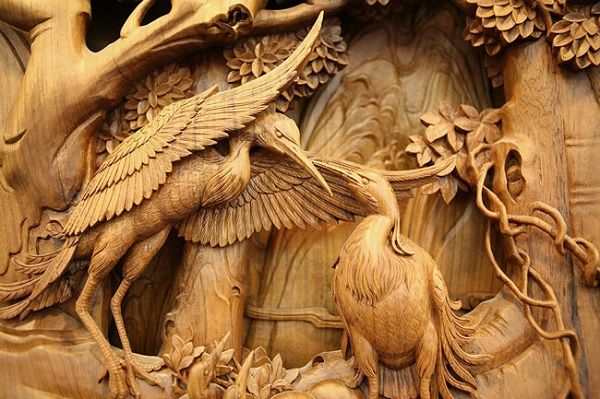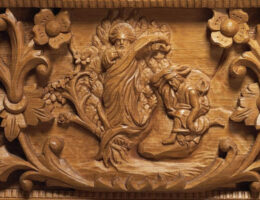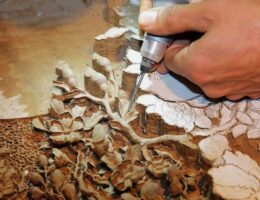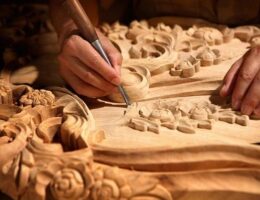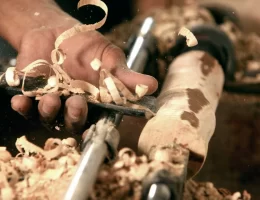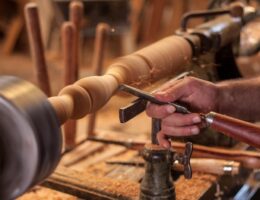IRAN ART EXHIBITION: MONABAT KARI IS ONE OF THE ATTRACTIVE PERSIAN HANDICRAFTS
About Monabbat Kari
Wood Carving is one of the most delicate Iranian handicrafts that is a combination of art and the pleasure of artists who create inexpensive and simple materials with valuable products, Artists who engage with a few pens and metal hammer on the wood, engraving their minds with Kofi lines, Slavic motifs, Khatayi, flowers, and chicken.
About Monabbat art
This handmade art symbolizes the feelings, perceptions, thoughts, and creations of artists, who invented the taste of art.
Monabbat history in Iran
According to the existing artwork in Iran, the history of this industry reaches 1500 years ago. Ancient Persians, as well as in the art of painting and carving ahead of other tribes, have gradually become familiar with the artistic techniques and artistic features of this field.
other works of art in Iran
Works of art and mosaics include putting wood in natural colors, dentin, bone, and pearls together and mixing them and creating a series of beautiful and newest drawings, such as various geometric shapes, slabs, miniatures, and the like.
Wood carving beside other works of art in Iran
Painting and decorative work to make the painting and polishing of engraving more beautiful is almost the final stage of work, and in the art of decorative Wood Carving, the artists and experts are interested in this technique.
Painting on wood carvings
Painting and decorative work, in addition to adding to the beauty of the work, keeps the wood from moisture and heat, and so on.
Where we can find Monabbat Kari?
In the cities of Iran, Abadeh and Shiraz are among the centers in which the Monabat Kari is very popular, especially in the city of Abadeh.
IRAN ART EXHIBITION: Woodcarving is among the oldest arts preserved in coastal provinces of Iran located in the southern side of the Caspian Sea. One of these provinces is Golestan where the abundance of wood has led to a form of woodcarving known as Laktarashi.
Laktarashi means the art of carving wooden vessels and containers engraved by shapes and pattern from the region’s mythologies and history.
This form of art has been passed from one generation to another in northern provinces of Mazandaran, Golestan and Gilan, which enjoy thick jungles with abundant wood.
Laktarashi entails both laborious hand work and creativity. Golestan woodcarving artists have included their rich cultural history in their artworks, resulting in artworks that are both practical and artistic.
Laktarashi artists are creative people who turn a raw log of wood into objects only by using simple tools. They have a good knowledge of trees’ species in the region and know what wood is suitable for each vessel.
However, according to an official at Cultural Heritage, Handicrafts and Tourism Organization, this practice is now considered as one of the endangered trades, due to the arrival of new technologies and the emigration of young people from the rural areas.
Ebrahim Karimi said, “In the past, Laktarashi was very common amongst the rural population in north of Iran, but now it is becoming an endangered form of art, with many forgetting about it altogether”. Pointing to the hay days of the trade, he said, “In the past, the products were made according to the needs of the market”.
In March 2018, Laktarashi was registered in the list of Iranian intangible heritage.
Wood carving is one of the oldest arts of humankind. Wooden spears from the Middle Paleolithic, as an example, reveal how humans have engaged in utilitarian woodwork for millennia.
IRAN ART EXHIBITION: Iran’s Malayer may be top on the list for those who are interested to visit a woodcarving hob. The west-central Iranian town is named a global hub for woodcarving and carved-wood furniture by the World Crafts Council – Asia Pacific Region (WCC-APR).
Located in Hamedan province, the ancient city is home to over 4,000 furniture workshops in which more than 8,000 wood masters and some 25,000 crafters are engaged.
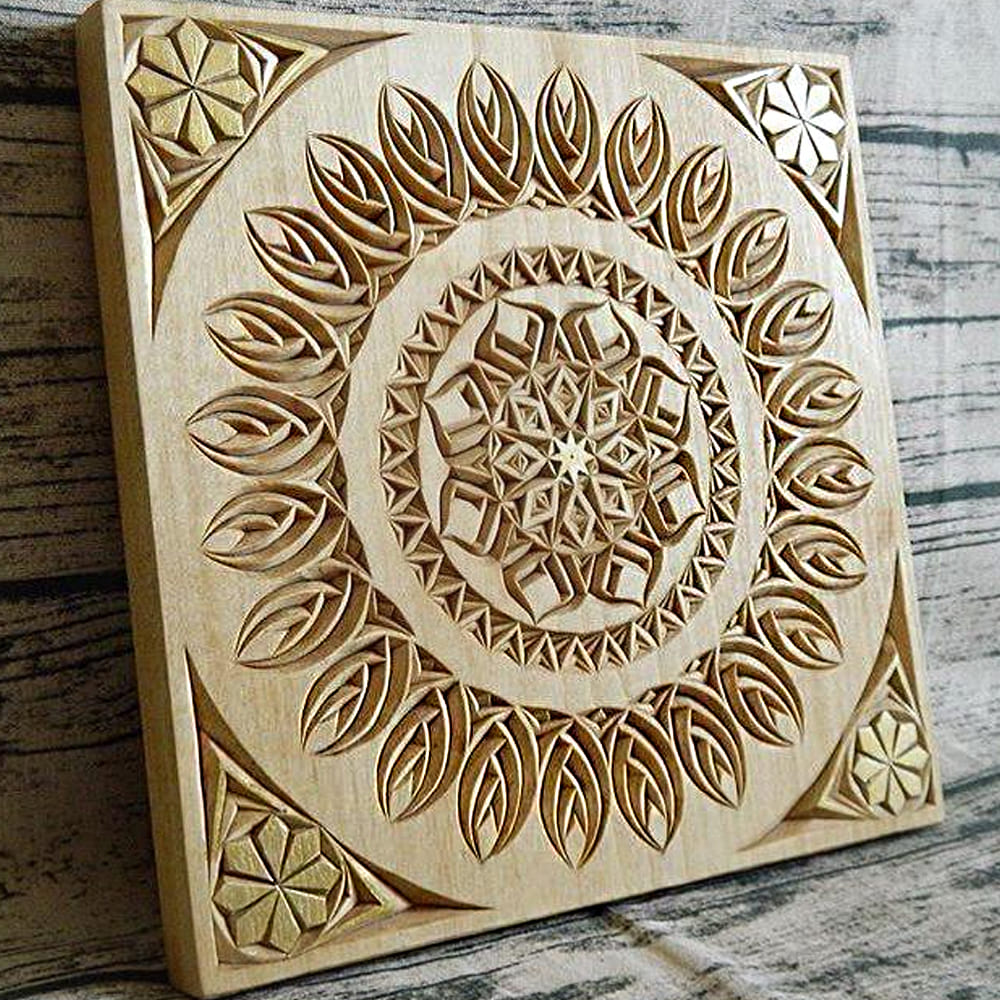
Although the art had been practiced in Malayer for a long time ago, it is about a half-century that it has gained prosperity in the region.
In some cases, the whole family is occupied with traditional furniture making and although they didn’t make much money this way, their love for handicrafts and the increasing perseverance of woodcarving artists of Malayer shows today a new face of this art-craft to the world.
Artists and crafter of this region use the wood of beech, walnut, and plane trees to make different products such as traditional, classic, steel, and sofa furniture. Their other products are dining table, desk, all kinds of chair, bed and decorative pieces.
Currently, more than 60 percent of the furniture and woodcarving products in Iran are reportedly produced in Malayer and they are sent to various Iranian cities or being exported to Central Asian countries, Persian Gulf littoral states, Turkey, and Iraq amongst some others. Known in classical times as Ecbatana, Hamedan was one of the ancient world’s greatest cities. Pitifully little remains from antiquity, but significant parts of the city center are given over to excavations, and there’s a scattering of historical curiosities.
IRAN ART EXHIBITION: As it is clear, by this art people would make ladder, carriage and house ware before the Achaemenidae dynasty; researchers have found relief design in which a girl is shown sitting and weaving in front of whom there is small table on which there are some fruits and a fish. Concerning the table it should be mentioned that the legs and the gap between them have been carving artistically, which indicates how familiar the artists were with this sort of art.
This art has also been positioned highly during the Achaemenidae and Sassanid periods. In the northeast of Persepolis, some clay inscriptions have been found the translation some of which indicate wage paying to the masters of inlaying art.
How to do woodcarving:
We fasten the piece of the wood which is going to be inlaid to the vice or it is fastened to the worktable manual vice.
The background of the surface can be carved with the flat gouge, which is called Woodcarving background. It can also be cut by drill and saw off the main design. Then after cutting around the background, the carved – latticed work is made. In carved – latticed work, the work is separated from the design, around which is later cut off. After that, some slight parts of the curves and inside the work are filed, which is called Seftkari or working on hand surface. After this stage, some oil is poured on the worked surface to make is fragile, oily surface is then ready for carving. After that the tip of the gouge is between slightly by the hand palm or an apparatus called Takhmagh to cut off around the work so that the background of the work is lowered as deep as needed; all the same is depth. Now it is the turned of polishing the job with gouge or some apparatus called Lisseh. In all stages of the work, weather in background work or in carving work, it is tried to move the gouges rightward to carve flowers and stems, which will the cause a good job. We then make some blows onto the tips of the different gouges with the palm of the hand to carve other parts of the job. In this way, according to the intended design, curves, straight lines concave and convex pars of the woodcarving are done.
